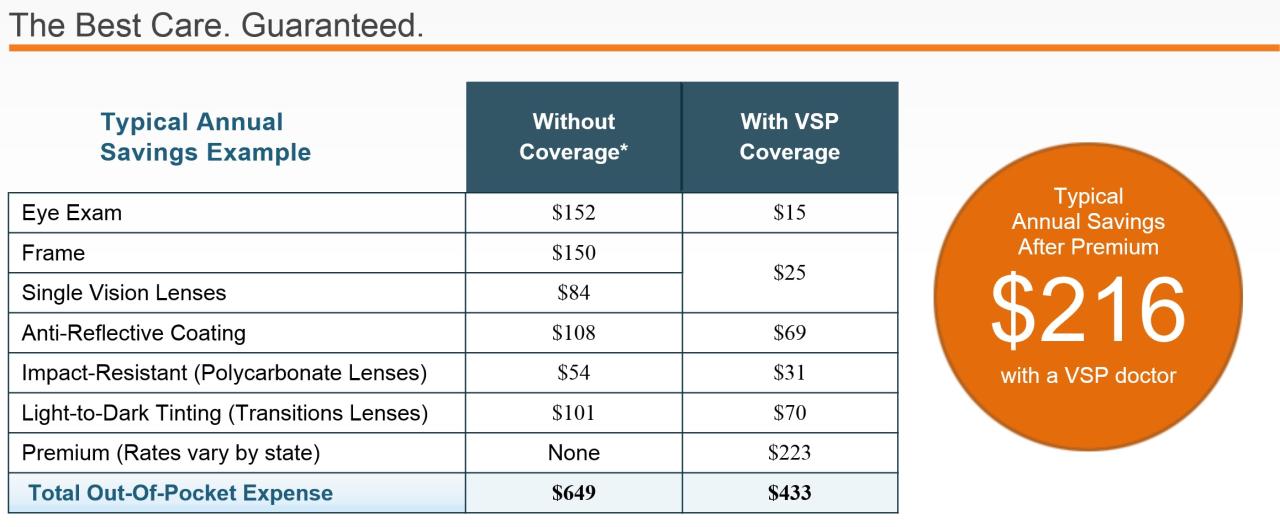Vision insurance plans are a vital component of comprehensive healthcare, providing financial assistance for eye exams, eyeglasses, and contact lenses. They offer peace of mind knowing that you have access to essential eye care services without breaking the bank.
These plans vary in coverage levels, from basic to premium, and can be obtained through individual purchase, employer-sponsored programs, or group plans. Understanding the different types of vision insurance plans, their benefits, and limitations is crucial in choosing the right plan for your needs.
What is Vision Insurance?: Vision Insurance Plans

Vision insurance is a type of health insurance that helps cover the cost of eye care, such as eye exams, eyeglasses, and contact lenses. It’s designed to make eye care more affordable and accessible.
Purpose of Vision Insurance
Vision insurance serves several key purposes:
* Financial Protection: Vision insurance helps you manage the cost of eye care, which can be expensive.
* Regular Eye Exams: It encourages regular eye exams, which are crucial for detecting eye conditions early and preventing vision loss.
* Access to Care: Vision insurance makes it easier for individuals to access quality eye care, including eyeglasses and contact lenses.
Types of Vision Benefits
Vision insurance typically covers a range of eye care services and products. Here are some common benefits:
* Eye Exams: These are usually covered annually or biannually, depending on the plan.
* Eyeglasses: Most plans offer coverage for eyeglasses, including frames and lenses. The amount of coverage varies depending on the plan.
* Contact Lenses: Some plans cover contact lenses, either soft or hard, with varying coverage limits.
* Laser Eye Surgery: A few vision insurance plans may offer partial coverage for laser eye surgery, such as LASIK.
* Other Services: Some plans may also cover other services, such as vision therapy, low vision care, and eye protection.
Common Vision Insurance Plans
There are several types of vision insurance plans available, each with different coverage options and costs. Here are a few examples:
* Individual Plans: These plans are purchased by individuals and typically offer a wider range of coverage options.
* Group Plans: These plans are often offered through employers, unions, or other organizations. They usually have lower premiums than individual plans.
* Vision Discount Plans: These plans provide discounts on eye care services and products but don’t cover the full cost. They are often more affordable than traditional vision insurance plans.
Wrap-Up
Ultimately, vision insurance plans empower individuals to prioritize their eye health, ensuring access to necessary care and protecting against unexpected costs. By carefully considering your individual needs, comparing plans, and understanding the nuances of coverage, you can make informed decisions that safeguard your vision and well-being.
Vision insurance plans can be a lifesaver for those who need regular eye care. Many insurance companies offer vision coverage, and one option to consider is Golden Rule Insurance Company. They may offer various plans with different levels of coverage, so it’s essential to compare them carefully and choose the one that best fits your needs and budget.
Remember to check the specific benefits and limitations of any vision insurance plan before enrolling.
